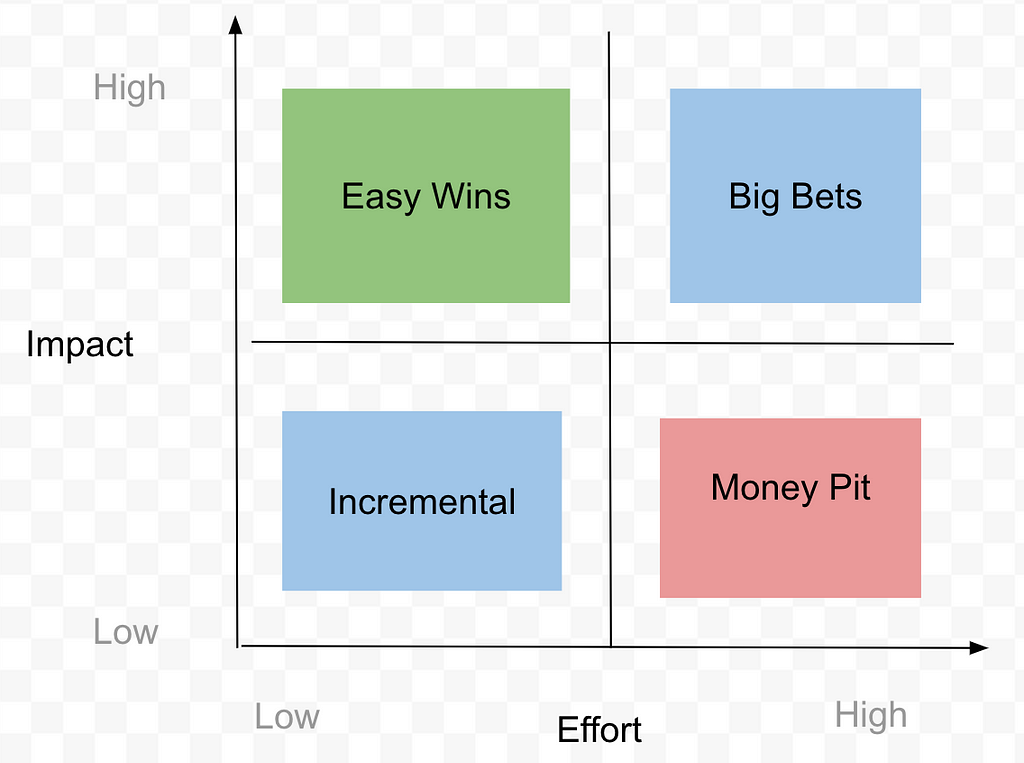

Unlocking Growth: 3 Years at Meta — Transformative Lessons for Work and Life
Working at Meta was fast-paced, challenging, and intellectually stimulating. For three transformative years, I worked as a Product Data Scientist in Integrity and account security at the bustling London office. Now, as I look back, I find myself continually drawn to the invaluable lessons gleaned during my time there. Beyond the confines of the office, these insights have seamlessly integrated into both my professional and personal growth.
Lesson 1: Always start with why
Meta champions meaningful contributions over mere activity. Twice a year, employees undergo rigorous assessments based on how much tangible impact they’ve made in the last 6 months. The focus isn’t solely on tasks completed or volumes achieved; rather, it’s about the consequential outcomes stemming from one’s actions.
It means that it doesn’t matter what you’ve done or how much you’ve done, it matters what happens because of what you’ve done.
As a Data Scientist (DS), it’s not about the hours logged or the volume of insights generated; what truly counts is the transformative impact of your discoveries.
Consider this: by uncovering a segment of users experiencing unusually short session times, you exposed a critical engineering bug affecting a specific device type. As a result, your findings catalyzed the Engineering team to rectify the issue and correctly measure session time, leading to a staggering increase of 20 million more minutes in session time measured per day. That’s the tangible ‘so what’ impact that defines your contribution.(Note that this is a completely made-up example)
In this “impact” culture, I found myself continually pondering the potential outcome of my projects, delving into the ‘why’ behind my actions. Yet, grappling with the clarity of this ‘why’ wasn’t always a straightforward journey; uncertainty often clouded the path. But one thing was clear: you should determine your direction of travel and not mistake motion for progress.
Starting with “why” works remarkably for stakeholder management, too. Often, people begin by detailing their process, only circling back to their purpose later, if at all. By probing their “why”, you gain insight into their priorities and motivations, facilitating more meaningful and effective interactions
For example, when someone comes to you with a request, initiate by probing: “What problems are you trying to solve and when do you want it delivered?” This can go two ways. They might stumble a bit, struggling to articulate their goals. That’s ok. Ask questions to help them clarify, like “I understand that budget is a constraint, but what would you want the campaign to achieve in the first place?”. If they need time to comb things through, politely decline their requests and send them back to their thinking chair — many times they won’t come back because they would realize it’s not urgent or important.
But if they come back with something like, “We wanna figure out which UI boosts user traffic through A/B testing and launch the new UI by Thanksgiving”, then you smile, nod and dive into measuring that impact!
Lesson 2: Measure everything

You can’t improve what you don’t measure.
— Peter Drucker
At Meta, numbers are the name of the game. If it’s not quantified, it might as well not exist. Product teams zero in on a key metric they’re aiming to boost or shrink — whether it’s revenue, active users, or incoming tickets. And the team’s triumph hinges on their ability to nudge that metric in the right direction. By rallying around one primary metric, everyone’s on the same page.
I’ve seen projects got canceled after a few months because the team could’t quantify goals that tie to the broader company goals.
In Part 1, we covered how starting with “why” can crack open insights into others’ work and requests. Here’s another golden question to follow up on: “How do you measure success?”
This question often links closely with the “why”. For example, if the aim is to determine which UI drive more user traffic, the measurement can be the number of users who land on the page.
Moreover, using numbers is a powerful way to navigate requests. As data people, we’re often tasked with “pulling some numbers” or “visualizing x in a dashboard.” I’ve found it helpful to challenge stakeholders to articulate the decisions they’d make based on those numbers. I’ll throw out scenarios like, “Imagine we have this number, say it’s 10%, 50%, or 80%. How would your decisions change accordingly?” It’s surprising how often stakeholders pause or dance around without a clear answer. 7 out of 10 times, they’ll say, “Let me think about it some more,” and then… crickets.
By doing that, you’ve effectively sifted out requests that fall into the “nice-to-have” category rather than the “must-have” ones.
Lesson 3: Prioritize, ruthlessly
While Meta’s impact culture attracts criticism around creating a high-pressure environment and focusing on short-term results, it’s been a goldmine for learning about prioritization. Every time I kick off a project or find myself knee-deep in it, I loop back to these tough questions:
- What outcomes are we aiming for with this analysis?
- Do these outcomes align with our stakeholders’ goals or the bigger picture for our team, department, or the company? Think active users, revenue, retention.
- How do we gauge the impact, and how significant is it? (Remember Lesson 2!)
- And lastly, who needs to take action based on what we uncover?
Once you’ve dissected your projects like this, a handy step is to plot them on an effort vs. impact matrix and find that sweet spot for prioritization. Aim to minimize Money Pit ventures while maximizing Easy Wins and Incremental gains in the short term. Save room for those Big Bets that promise long-term payoffs

When new projects come to your pipeline, evaluate the effort and impact and compare them against your existing projects. If a newcomer looks more promising, don’t hesitate to shuffle things around — sometimes that means dropping an old project to make room for the shiny new one.
As company priorities often shift, it is ok to de-prioritize or re-prioritize projects midway; But here’s the trick: keep that constant evaluation going strong. Break down each project with those trusty questions, so you can keep your eyes locked on the prize — the most impactful stuff.
Takeaways
Lessons
- Always start with why
- Measure everything
- Prioritize, ruthlessly
Questions for requests
- Why — What problems are you trying to solve?
- When — When do you expect it to be delieverd?
- How — How do you measure success?
- What — Let’s say we have this number and it is 10%, 50% or 80%. How would your decisions change accordingly?
Questions for prioritization
- What — What outcomes are we aiming for with this project?
- Why — Do these outcomes align with our stakeholders’ goals or the bigger picture for our team, department, or the company?
- How — How do we gauge the impact, and just how significant is it?
- Who — Who needs to take action based on what we uncover?
Disclaimer: This article reflects my experience and opinions only. It does not represent the views or opinions of any company or organization.
Unlocking Growth: 3 Years at Meta — Transformative Lessons for Work and Life was originally published in Towards Data Science on Medium, where people are continuing the conversation by highlighting and responding to this story.
Originally appeared here:
Unlocking Growth: 3 Years at Meta — Transformative Lessons for Work and Life
